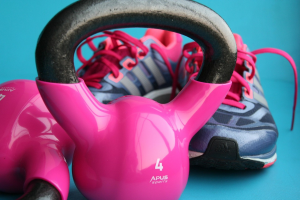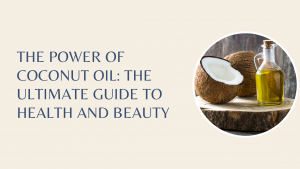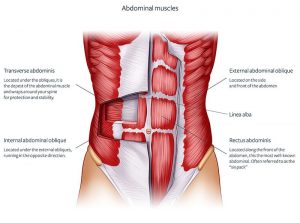Heading out for a hike isn’t just about picking the right trail. What you wear can shape your entire experience. The wrong gear can leave you overheated, sunburned, nursing sore feet—or worse, exposed to ticks, rough terrain, or even snakes. As a physical therapist and avid hiker, I’m often talking with patients and friends who are surprised to learn just how much your clothing can affect your comfort, safety, and even recovery after a hike.
Whether you’re hiking in summer heat or chilly fall air, this guide breaks down the best hiking outfit ideas for every season. It’s designed to help you stay safe, supported, and prepared—without sacrificing style or mobility.

Hiking is more than just a workout—it’s one of the best ways to build strength, boost mental clarity, and enjoy the outdoors. As a physical therapist who’s spent plenty of time on trails, I know firsthand how the right outfit can make or break the experience.
How to Dress Smart (& Cute) for the Trail Without Overthinking It
The best hiking experiences come from staying dry when the weather shifts, avoiding blisters on longer hikes, and keeping your body temperature steady year-round. The right layers, shoes/boots, and accessories can help prevent everything from sunburn to sore joints, especially if you’re planning to be out for several hours. Whether you’re a beginner or a seasoned hiker, this guide walks you through exactly what to wear so you’re comfortable, protected, and ready to enjoy every step of the trail.
Start from the Ground Up: Hiking Footwear and Socks
Let’s begin with your base—your shoes and socks. Whether you’re planning a short summer hike or a day-long winter trail, the right footwear sets the tone for your comfort and safety.
-
Hiking Boots vs Hiking Shoes: Boots offer ankle support and are ideal for uneven or rocky trails. Shoes tend to be more breathable and lighter, great for well-maintained paths or warm weather. Check out my post 9 Best Hiking Boots for Beginners.
-
Seasonal Tip: In summer, look for breathable mesh shoes/boots; in fall/winter, prioritize waterproof boots with solid tread.
-
Socks Matter: Choose moisture-wicking, padded socks (avoid cotton). Merino wool works well in both warm and cold conditions.
PT Insight: Don’t ignore the midsole. A supportive footbed helps reduce strain on your arches and protects against foot fatigue and plantar fasciitis. Avoid using regular sneakers on the trail, especially for longer or uneven hikes. Without proper tread and ankle support, you’re more likely to lose your balance, slip, or twist an ankle. If you have a history of ankle instability, consider choosing a boot instead of a shoe. Not everyone needs a high boot, but a low or mid-rise hiking boot can offer the support you need without restricting movement. Make sure your boots or shoes aren’t too heavy, either. Excess weight in your footwear can lead to joint pain and leave you more fatigued by the end of your hike.
Moisture-Wicking Layers: Build a Base That Works with Your Body
Hiking generates heat and sweat, even in cooler months. That’s why layering strategically is essential.
-
Base Layer (Next to Skin):
-
Mid Layer: Think fleece or a light pullover that traps warmth.
-
Outer Layer: Always bring a wind- or water-resistant shell for sudden weather changes.
Beginner Tip: Dress as if it’s 10 degrees warmer than the weather forecast—your body will warm up quickly as you move.
Shorts, Pants, or Convertible? Choosing the Right Bottoms
Hiking Shorts
Great for hot, dry trails with low brush. Look for options with stretch and secure waistbands.
While shorts are a go-to for some hikers in extreme heat, they don’t offer much protection from bugs, brush, or surprise trail encounters. If you do opt for shorts, pair them with taller socks and supportive ankle-high boots to reduce exposure and add some coverage where it counts.
⭐️ The Gnara Go There Hiking Shorts are designed for serious adventurers who don’t want to sacrifice comfort for functionality. These shorts feature a discreet GoFly pee zipper, making outdoor relief easier without fully undressing — a game-changer for trail and backcountry hikes. Made with movement-friendly stretch fabric and a flattering fit, they’re ideal for active days in unpredictable terrain.
⭐️ These CRZ YOGA Lightweight Hiking Shorts are a breathable, stretchy alternative to heavier gear. Designed for movement, they offer a mid-rise fit with a 4-inch inseam and zippered pockets that keep essentials secure whether you’re on the trail, the course, or traveling light in summer heat.
Joggers/Pants
Ideal for buggy areas, tall grass, rocky terrain, or when ticks and trail scratches are a concern. Full-length coverage is often the safest and most comfortable option, especially in unpredictable conditions or dense environments.
Opt for lightweight to midweight joggers, cargo pants, or hiking leggings that offer stretch and breathability.
The best blends for joggers and pants are typically 88–96% nylon with 4–12% spandex, which offers a mix of durability, moisture-wicking, and flexibility. Look for abrasion-resistant fabric that dries quickly and holds up on rocky terrain or through overgrowth.
⭐️Baleaf Women’s Hiking Joggers offer a lightweight, water-resistant option with a comfortable elastic waist—great for trails that call for more coverage. These quick-dry pants are versatile enough for any season and include zippered pockets to keep your gear secure.
Hiking Leggings
When it comes to leggings, there are a few reliable styles worth keeping in rotation:
-
Cargo-style leggings: Great for transitional weather. These usually feature a polyester-lycra blend with side pockets and added structure. They’re sleek but functional for short-to-medium hikes.
-
Cold-weather leggings: These provide extra insulation for winter hikes or cooler fall days. Look for brushed fleece interiors and a higher waistband for extra coverage and comfort under layers.
⭐️ The YEOREO CoreFlex Cargo Leggings combine a sculpted fit with functional storage. These gym-ready leggings feature a hidden scrunch design for a subtle lift, multiple pockets for convenience, and a high-stretch fabric that moves with you through every hike, workout, or travel day.
Convertible Pants
Best for variable conditions—especially spring or fall hikes where mornings are cold but afternoons warm up.
If you want the most trail flexibility, convertible pants are hard to beat. You’ll get full protection early in the day and can zip off the legs when it heats up. Then, if temps drop or terrain gets rougher, just zip them back on for more coverage. It’s a simple way to adapt without hauling extra gear.
⭐️ Cycorld Women’s Convertible Hiking Pants are a great alternative to traditional shorts. They’re made from a lightweight, quick-dry fabric with built-in stretch and feature five deep zippered pockets to keep essentials secure.
Sun Protection from Head to Toe
Even in winter, UV rays can cause skin damage on exposed trails.
-
Headwear: Opt for wide-brim hats, visors, or caps with a neck flap.
-
Clothing: UPF-rated long sleeves and pants offer sun protection without overheating.
-
Accessories: Don’t forget sunglasses and sunscreen
🌞Sun protection isn’t just about avoiding burns. Skin that overheats or dehydrates too quickly can raise your core temperature and increase fatigue on the trail. Keep your gear light but protective.
Trail Essentials: Backpacks, Hydration, and Practical Add-Ons
A good hiking outfit goes beyond clothing. Your gear setup plays a key role in how you feel.
-
Backpack Fit: Use one with adjustable shoulder and chest straps to distribute weight.
-
Hydration: Use a hydration bladder for hands-free access or pack lightweight bottles.
-
Extras:
PT Insight: Uneven pack weight can cause low back or shoulder fatigue. Pack intentionally.
Cold-Weather Hiking: Stay Warm Without Overheating
If you’re hitting the trail in late fall or winter, your outfit needs to handle both movement and insulation.
-
Use breathable base thermals, but avoid bulky cotton layers.
-
Wool socks + insulated boots = dry, warm feet
-
Add a lightweight jacket or puffer as your top layer.
-
Gloves and ear warmers or a thermal hat round out your winter gear.
Tip: Choose layers you can remove easily as your body warms up. Inclines, sunshine, and faster paces can all raise your core temperature quickly.
⭐️ The Eddie Bauer CirrusLite Down Jacket is a lightweight, packable essential that’s perfect for layering during cool-weather hikes or travel. Made with responsibly sourced down and a water-repellent shell, it offers warmth without bulk in a flattering, easy-to-style design.
What Not to Wear on a Hike (No Matter the Season)
-
Cotton shirts or socks
-
Denim or stiff pants
-
Fashion sneakers with slick soles
-
Heavy perfumes or scented lotions (they attract bugs)
-
Crossbody purses (strain your shoulders and limit movement)
Final Thoughts: Hiking Smart Is All in the Details
Your hiking outfit should protect you from the elements, support your movement, and adjust to your body’s needs as the trail changes. You don’t need to overthink it—just choose gear that works with your body, not against it.
If you’re dreaming up a trip that blends movement, nature, and comfort, you’ll love the ideas in this travel aesthetic guide. It’s filled with wellness-focused tips for planning a getaway that feels both peaceful and purposeful.
For those looking to take the stress out of trip planning, Dr. Dawn’s Balanced Living Concierge Service offers personalized rental research to help travelers find clean, comfortable stays that support rest, recovery, and movement. Whether it’s a hiking escape, a wellness retreat, or a family-friendly getaway, each recommendation is tailored with care and backed by real PT insight.
Medical Disclaimer: The information on this site, including text, graphics, images, and other material, is provided solely for informational purposes and is not intended to be a substitute for professional medical advice, diagnosis, or treatment. Always seek the advice of your physician or other healthcare professional with any questions or concerns you may have regarding your specific condition.




